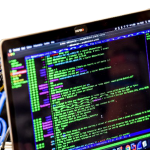Your future IT department has no humans

Here’s a proposition for you– your future IT department has no humans. That’s a big proposal, so let’s qualify that statement a little.
Your current IT department has developers and programmers, systems administrators, architects, database administrators, and other operations staff in many different guises. But the trends now shaping IT development platforms appear to suggest that many of these roles could just go away in the near future.
The weight of effort being put into IT automation and orchestration solutions today is pushing us towards an IT department with far fewer (and perhaps in some cases zero) human souls in residence. When we combine these new functions with advancements in AI, the whole IT shop starts to look very different indeed.
Automatic remediation
Current developments coming out of large-scale network specialists are focused on software-driven technologies that are capable of analyzing system performance across user devices, across entire devices and across domains within the network to automatically remediate problems and optimize experiences.
Users’ transactional business data is being fed into new data models capable of ‘employing’ (the industry loves to say ‘leveraging’) machine learning to deliver application performance diagnostics and automated root-cause analysis.
All that service support edges us towards an IT department with far fewer human beings.
The rise of so-called low-code software application development platforms that give business users the ability to drag-and-drop elements of software functionality together so that they can design their own apps also adds to this equation i.e. even the programmers themselves start to become usurped by these ‘citizen developer’ businesspeople.
The promise that comes out of this massively automated IT department is a level of functionality where user issue resolution times are reduced from minutes to seconds.
Up the stack, across the estate
People talk about an organization’s installed ‘stack’ of software as if it were some kind of vertical pile… and it is in many senses, so the automation effort will need to extend from ground zero at the infrastructure level right upwards to the graphical user interface itself.
Alongside that vertical shift, organizations will also need to think about applying automation intelligence and software orchestration management efficiencies ‘across the application estate’ – that is, across not just application A, but from application A into application B and C and with connection to database points X, Y, and Z.
This up and down and across action is a reality for all organizations… it is precisely why we often talk about enterprise data and applications and their end-to-end implications.
All this automation intelligence in IT operations has a name… and it’s AIOps, standing for Artificial Intelligence [IT department] Operations.
YOU MIGHT LIKE

Should my business take out cybersecurity insurance?
“[The reality is that] IT teams are drowning in data coming from modern application environments that span multiple clouds, containers, and microservices, making it incredibly difficult to find the root cause when there is an issue with an application. At the same time, businesses are under pressure to ensure flawless user experiences every time someone uses their app,” said Nancy Gohring, senior analyst at 451 Research.
“AIOps tools – those that can intelligently analyze the breadth of data generated by modern systems – are key to serving the needs of both business and IT constituents in this challenging environment.”
In the real world, even the future real world, there will of course always be a good number of human beings working in parts of the workplace that have benefitted from massive advances in automation such as those discussed here.
The difference (or so we are promised at least) is that we’ll be able to let the machines get on with the drudgery and spend our time on more valuable pursuits that create new product and services innovation.
The future automation revolution is close, just make sure you’ve got your order in for lunchtime sandwiches and coffee… as those functions are up for total automation too.








